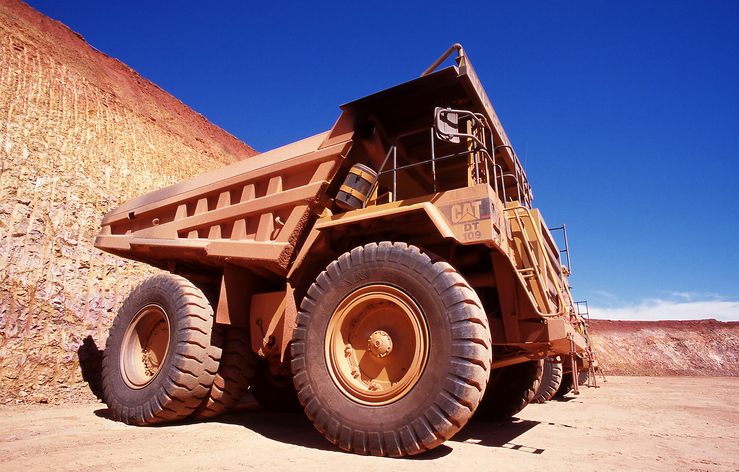AI Gives Miners a Cutting Edge

When Australian miners explored for minerals across the vast continent, their tools included drills and excavators. Today, AI is playing an increasingly prominent role.
Earth AI is an Australia and San Francisco-based startup that uses an engine built on 40 years of Australian geological data layered with satellite data from NASA and geophysical data from the Australian National Archives.
The company formed an alliance this month with a small mining explorer called Legacy Minerals to harness the Earth AI software to look for potential projects across mining tenements in New South Wales. It believes it could locate cobalt and platinum deposits critical in the production of modern batteries.
The deal with Legacy Minerals will see Earth AI earning a 3% royalty on any sales if its software discovers deposits that ultimately lead to mining.
The mining technology space first came to prominence with automation and IoT, with Rio Tinto’s driverless trains and trucks in Western Australia the earliest and most prominent use cases.
Now, small miners are retrofitting their trucks with automated technology. At the same time, a new wave of startups is using data, AI, and geolocation for the exploration phase of the mining process.
In the past, this could be hit and miss, time-consuming and expensive, and also risked significant environmental damage
Five-year extension
There are more prominent players in the mining AI space than Earth AI. Billionaires Jeff Bezos and Bill Gates are backing a company called KoBold Metals, which raised almost USD200 million from investors, including the venture capital arm of mining giant BHP.
KoBold seeks to accelerate the discovery of metals used in batteries by creating its version of Google maps of the Earth’s crust.
BHP has already used AI scanning technology from another company, Brisbane-based Plotlogic, in powering the five-year life extension of the massive Yandi iron ore mine in Western Australia.
BHP’s original plan was to close Yandi and replace that production with another mine. But Plotlogic scanned the Yandi site and located new ore bodies. Although these will deliver only a quarter of the previous production, it will still enable another five years of product. It will also save on what would have been another USD3.6 billion investment in a new mine.
“Plotlogic’s goal is to work with our customers to use AI and automation to deliver the future of natural resources — one that benefits both society and the industry”
Plotlogic was founded by a former mining executive and uses AI and advanced imaging to find ores in real-time. It has expanded rapidly and recently opened a Brazil office and counts other major mining companies such as Glencore and Anglo-American among its customers.
The current use of the technology is at the Anthill Mine in Queensland, where contractors are using Plotlogic’s OreSense technology to locate ore bodies.
The goal is to distinguish high-grade mineralization from waste materials. OreSense fuses data collected from sophisticated sensors, including hyperspectral cameras in the infra-red part of the spectrum and LiDAR, geolocation, and machine learning algorithms.
Environmental goals
According to chief executive Andre Job, sustainability is a crucial rationale behind Plotlogic. He says that mining should be able to generate the resources needed by society “without harming the environment.”
“Plotlogic’s goal is to work with our customers to use AI and automation to deliver the future of natural resources — one that benefits both society and the industry,” he says.
Another similar project is in South Australia, where gold explorer Barton Gold has enlisted the services of mining tech company SensOre to find “targets” for drillers using SensOre’s discriminant predicting targeting, or “DPT” method in an area of 60,000 square kilometers.
Across the eastern seaboard, OreFox is another AI-driven startup that worked with a miner in Queensland to locate additional value from a mine set for decommissioning.
In April, University of Western Australia academic Eun-Jung Holden was awarded the top honor in the Women in AI Awards for Australia and New Zealand for her work with Rio Tinto on their gold projects.
Professor Holden has developed what she says is a “human-driven but machine-assisted approach” where machine learning bases its predictions on previous knowledge.
“You can’t just give machine learning outputs as an output,” she says.
“We actually have a feature analytics platform where we can add in the existing auxiliary datasets they already use in their company. When you actually have all this full picture, then you have geologically feasible solutions.”
Lachlan Colquhoun is the Australia and New Zealand correspondent for CDOTrends and the NextGenConnectivity editor. He remains fascinated with how businesses reinvent themselves through digital technology to solve existing issues and change their entire business models. You can reach him at [email protected].
Image credit: iStockphoto/slovegrove







